Profiles in Passion: Neighbors Fighting to Preserve the Past
DEEGAN ON LA-These are profiles in passion: neighbors objecting to the destruction of the Edinburgh Bungalow Court buildings that had been scheduled for demolition, but were granted a stay of execution, pending approval of Historic Cultural Monument status by the City Council in several days.
This preservation status could result from what the developer Matthew Jacobs calls “an obscure City process” -- albeit one that is routinely used to prevent exactly the type of destruction he wants. He is circulating a petition in the neighborhood urging people to “sign the petition that many of your neighbors are signing that tells the City you oppose historic designation and your support for a new project.” Not since the McMansionization nightmare have such tactics been used in trying to sway public opinion.
No wonder the debate is so heated: this is a microcosm of a larger citywide conversation about what our architecture should be. Do we want the comfortable, iconic, historic building styles that have come to identify our city for many decades? Or do we want the faceless, overbearing and expensive boxes that lack character but are sprouting up everywhere? Or, is it possible to achieve a hybrid of new buildings modeled on styles that have worked so well for almost 100 years?
That middle ground beats the ying and yang of total preservation versus total destruction. It may be the type of compromise to settle the nerves of the communities while cause developers less grief. The truth is, some old buildings, however charming, are marginal. And, some new buildings are, in fact, attractive.
The Cultural Heritage Commission heard the case on November 19, 2015 and voted unanimously to support the pending Historic-Cultural Monument (HCM) designation for the Edinburgh Bungalow Court.
Next up is the vote of the Planning and Land Use Management Committee (PLUM) on February 16 at 2:30 pm, followed the next day by a vote of the full City Council.
Proponents for preservation Heather Fox, Brian Harris, and Alisha Wainwright have no skin in the game to save the Edinburgh Bungalow Courtyard buildings, except that they love them and want the them around for a lot longer so many others can love them too. Matthew Jacobs has the motive, means and opportunity for profit here, pitting what may be considered an opportunist -- a “flipper” out to cash in -- against a group of altruists.
It seems like an uneven match, but remember, David only needed a pebble to put the eye out of the giant and thus level the playing field. Councilmember Paul Koretz (CD5), who supports the preservation of the Edinburgh Bungalow Court, subject to a structural integrity analysis, may just be that pebble. A Koretz spokesperson told CityWatch at press time that, “The Councilmember is continuing to meet with both sides and we're still very much in the process of receiving input.”
In a rapidly changing city morphing from its traditional Spanish feel into faceless, charmless boxes and rectangles, we could say that these neighbors represent exponentially more than three voices in the ongoing conversation about preservation. People across our city facing the same issues need to know there are ways to fight back.
Built in 1923, the Edinburgh Bungalow Court is a Multi-Family Residential property, located at 750-756 1/2 N. Edinburgh Avenue, between Fairfax and Crescent Heights, and Melrose and Santa Monica Blvd. It was designed and built in the Spanish Colonial Revival style that was emblematic of a Hollywood that is fast disappearing.
There are, however, two sides to this story. Developer Matthew Jacobs, speaking about the property, has called it “a blight and public safety hazard.” He is as aggressive in his campaign to line up support for demolition as the activists are in rounding up support for preservation. At least three different flyers have been passed out in the neighborhood, supporting demolition. One neighborhood “deep-throat” (who would not speak for attribution) said, “you should check the city’s records, which show citation after citation going back decades.”
According to the Los Angeles Conservancy, which supports the preservation, “Some of the historical significance is that the Edinburgh Bungalow Court is closely associated with the rise of Hollywood. This type of development expanded significantly during the 1920s and 1930s to accommodate people who worked in the nearby entertainment industry”, adding “the property responded to the need for new housing in Los Angeles as settlement patterns pushed westward, and it reflects high quality workmanship.”
This comes from the experts who know best: The Los Angeles Conservancy is a non-profit, volunteer-driven organization that is antithetical to the profit-driven developers who see properties like this and say, as they call out the demolition team, “I can build a better building than that!” The track record of many developers is abysmal; and our character-filled neighborhoods feel the impact of their intrusions. We live with their eyesores.
Coming off losing his fight against preserving the nearby Los Flores project that he also owns, developer Matthew Jacobs is using a now-familiar template -- the Ellis Act -- to evict tenants, destroying what may be considered a structure with historic value and ultimately erecting an out-of-place box with a sky-high rental or purchase price-tag: another nail in the coffin for our beautiful neighborhoods.
Developer Jacobs cannot be expected to take back-to-back losses without a fight in what now depends on a political decision to be made by City government. He lost round one and now he has two more chances to prevail in the PLUM and the full City Council. However he sounds like he may be listening to the community, where ironically he actually lives, three buildings away from the Edinburgh Bungalow Court.
Jacobs has told CityWatch that he has modified his Edinburgh plans. “The old application for a starkly modern project has been withdrawn, and we plan on going back to the drawing board as we received good ideas and informative input from our neighbors and the historic community,” adding, “if a project is developed in the future, it will respect the past, and we are committed to working collaboratively with our neighbors to design something scaled, appropriate and compatible with the neighborhood.”
However, it’s impossible to know if this is a tactic or a promise.
While some may dispute his claim of collaboration, Jacobs must be given the benefit of the doubt, even though this will not stop the vigorous campaign against him; his assault on the preservationists is unlikely to stop.
Councilmember Koretz is taking calls from everyone and can be expected to hear many more voices in the next several days running up to the PLUM and City Council votes.
While the neighbors continue to want preservation not conversation, the pitch by Jacobs stating that he will work with the community does show a sensitivity that’s been missing. Perhaps it is an example of a developer offering listen to the community instead of just leaning on them.
How this plays out -- the design, the destruction, the possible preservation, the two upcoming votes -- has become a political hot potato, sitting square in the lap of Councilmember Paul Koretz (CD5), whose term ends in 2017. He must be including in his re-election calculus that the winds are blowing strongly against developers right now.
Recently, there have been successful lawsuits to stop development projects and now there is a prospective ballot measure (the Neighborhood Integrity Initiative) to give land use and development a “time-out.” People who are angry are becoming aggressive activists and are starting to hold politicos accountable.
In the case of the Edinburgh Bungalow Court, Heather, Brian and Alisha are fighting as hard as they can for preservation. They form an inspired opposition.
 Heather Fox lives a few doors down from the Edinburgh property and says, “the thought of them being destroyed did not sit right with me….I was really moved listening to a dozen neighbors speak out at the neighborhood council land use committee meeting, and hearing the committee criticize the plans of the developer because they did not fit in the neighborhood. There was a mention that bungalow courts are an important architecture type in LA and that’s when I got fired up to do something. I essentially became a community advocate.
Heather Fox lives a few doors down from the Edinburgh property and says, “the thought of them being destroyed did not sit right with me….I was really moved listening to a dozen neighbors speak out at the neighborhood council land use committee meeting, and hearing the committee criticize the plans of the developer because they did not fit in the neighborhood. There was a mention that bungalow courts are an important architecture type in LA and that’s when I got fired up to do something. I essentially became a community advocate.
We set up a lemonade stand on the corner and made friends with neighbors and started spreading the word. We started collecting petition signatures and meeting people involved in other organizations concerned with historic preservation.”
New to the game of advocacy, Heather learned that, “there is so much work to do: Update our Facebook and our email list, try to get people to come and speak up at important meetings, line up architects and structural engineers to help educate us on the details of restoring the bungalows, and attend hearings for other people fighting the same fight because a big part of this movement is supporting others. Making connections and learning from people is a critical piece.”
The bright spot of her daunting campaign, says Heather, is that, “Part of what makes these bungalows so special is how they have brought our community together. They represent what is possible. Edinburgh Bungalow Court is a small example of what is happening in L.A. right now. Developers with no interest in community integrity or history have taken over the city for profit and people are waking up to it. I've live in L.A. my entire life and I can't stand by and watch it happen anymore. My hope is that when the bungalows are restored, we can celebrate with a block party for the hundreds of neighbors who helped make it happen. I want to win this for our community and for Los Angeles. This is one of the hardest things I've ever done and I'm optimistic that the outcome will be a positive one.”
Neighbor Brian Harris, who lives adjacent to the property, lays out a similar narrative: “I became involved when my neighbor Gregg's flyer came to my door showing a picture of the new development and encouraging attendance at the Mid City West Planning and Land Use Committee meeting. Being a property owner and adjacent to this development I went to find out more details. This was my first neighborhood council meeting and the room was filled with people, many of them eager to find out about and speak on Edinburgh Bungalow Court.”
At the neighborhood council land use meeting, according to Brian, “The developer and his architect gave a presentation and then many people spoke from their heart. One such speech was Alisha's. Her experience was raw and emotional and I was immediately made aware of the Ellis Act and how these developments not only wipe away history and rent stabilized apartments but also how that with every apartment lost, there is a person who leaves the neighborhood too.”
“I had to get involved”, declared Harris. “I started researching for the Historic Cultural Monument application and was connected with Heather Fox who had already begun the process. I began informing neighbors about the issue and what they could do to help raise awareness and support the cause. Going door to door with petitions, hosting lemonade stand Sundays with neighbors for exposure, and pedaling around with my Save LA History bike were things I enjoyed doing for the cause.
I also talked with my Councilmember Paul Koretz several times. He is doing so much for our CD 5 on the housing front and is a man who really listens to his constituents. Without him, these efforts wouldn't be possible. He's leading the way.
“Saving 750 Edinburgh is the mission but the bigger picture is to save all of LA’s neighborhoods. Speculation with this latest housing boom is turning the city into a field of luxury generic living for those who can afford it and tent cities for those who can't. It's tragic, it's inhumane, and it's happening. LA is becoming the cliche that everyone outside believes it to be. I have to use my voice to keep that from happening. It's the right thing to do.
“My expectations are hopeful ones. I expect to either work with the owner on restoration or as he asked at one time, to bring him a purchaser who will pursue that goal. I hope and expect the process to continue it's current path where the designation of this historical resource is based on its merits and recommendations from experts and not in the relationships within government, social, and other various entities.
“I expect the people to continue to be heard. I also expect to continue to fight for historic resources within and outside my neighborhood, for affordable housing everywhere, and for keeping LA a diverse and amazing place to live and grow. LA is the land of dreams. My dream starts at 750 N. Edinburgh Ave.”
The emotional heart of the fight may belong to Alisha Wainwright, a tenant at Edinburgh who was evicted by Matthew Jacobs. “It started when I got an Ellis Act notification sometime last April,” said Alisha. “I attended my first neighborhood council meeting back in June just to see what they were planning on doing with the building and, when I did, I was really disappointed. Not only did it not reflect the neighborhood aesthetic, but the community didn’t like it. So I spoke about my personal experience, as I do whenever I get a chance to speak about the beauty and simplicity and charm and history that I felt in that apartment. My favorite features of my Edinburgh apartment were the beautiful mantel with unique tile motifs and the original paned windows that let in a lot of natural light.
“I was so impressed with the work of my neighbors, because they didn't even live in 750 N. Edinburgh, but they saw the potential to make it really beautiful on the outside, like I did.
“It seems almost everyone except a very select few don't agree on the history and cultural significance of the building. I believe there is a middle ground where historical significance can be honored and the developer can make a profit.”
Dragnet’s Joe Friday opened each episode by declaring: "This is the city. Los Angeles, California. I work here...I carry a badge”. Heather, Brian, Alisha and hundreds just like them -- maybe even thousands more that may be inspired by them -- are out on our streets saying, "This is the city. Los Angeles, California. I live here...I carry a petition.” There’s no stopping them. And there is lots of room for listening to them.
(Tim Deegan is a long-time resident and community leader in the Miracle Mile, who has served as board chair at the MidCity West Community Council, and on the board of the Miracle Mile Civic Coalition. Tim can be reached at [email protected].) Edited for CityWatch by Linda Abrams.


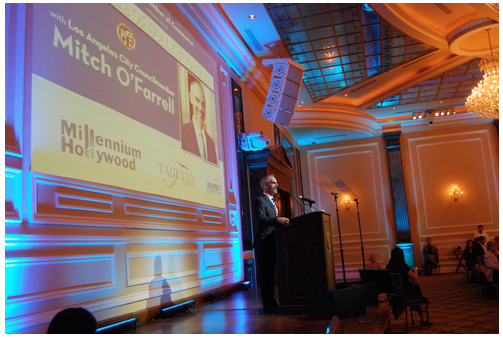
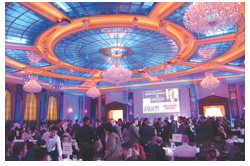 “The control of zoning by these single city council members should be illegal,” Riordan said in a statement last month. “That person is being lobbied by the developers and getting campaign money or campaign promises, and this just has to end.”
“The control of zoning by these single city council members should be illegal,” Riordan said in a statement last month. “That person is being lobbied by the developers and getting campaign money or campaign promises, and this just has to end.”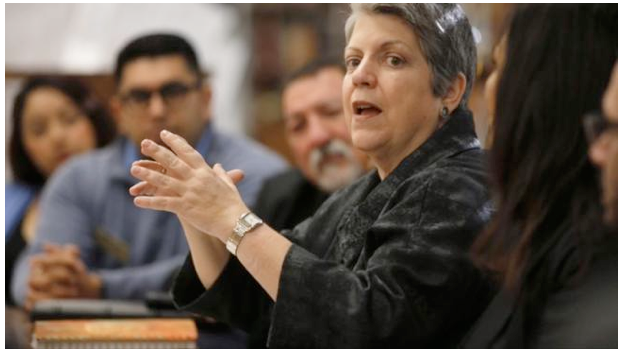
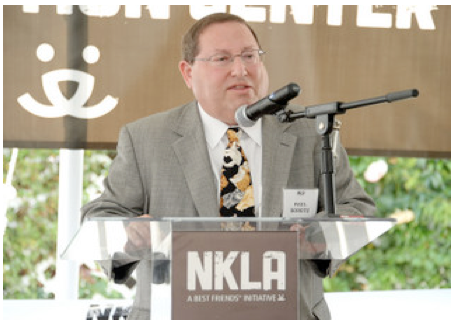
 I asked two of my most witty, politically astute colleagues to describe this intentional desecration of the zoning code, which will turn man’s best friend into a business owner’s worst nightmare. They quipped back immediately, “Council Committee ‘Screws the Pooch’ and L.A. Businesses” or “Los Angeles Does Business Doggy Style.”
I asked two of my most witty, politically astute colleagues to describe this intentional desecration of the zoning code, which will turn man’s best friend into a business owner’s worst nightmare. They quipped back immediately, “Council Committee ‘Screws the Pooch’ and L.A. Businesses” or “Los Angeles Does Business Doggy Style.” 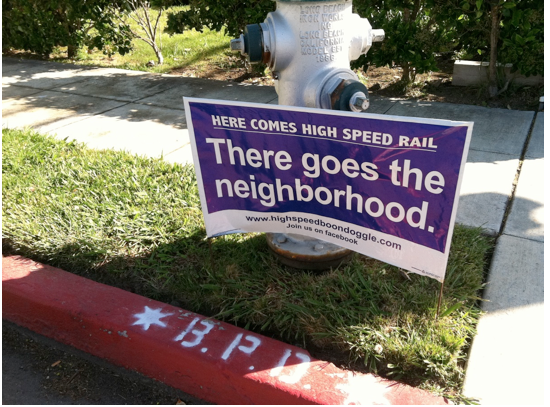

 In February 2008, voter turnout was about 39 percent, only slightly better than earlier turnouts. Clinton and McCain captured most of California’s delegates but Obama eventually became the Democratic nominee. Holding the primary in February ended up costing the state $97 million during a cash-strapped time and then the state still had to hold another primary in June that year to choose state legislative and congressional seats, resulting in a turnout that was under 20 percent.
In February 2008, voter turnout was about 39 percent, only slightly better than earlier turnouts. Clinton and McCain captured most of California’s delegates but Obama eventually became the Democratic nominee. Holding the primary in February ended up costing the state $97 million during a cash-strapped time and then the state still had to hold another primary in June that year to choose state legislative and congressional seats, resulting in a turnout that was under 20 percent. 
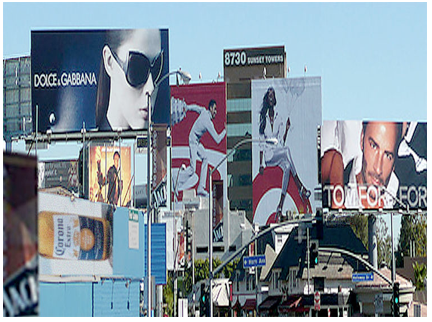




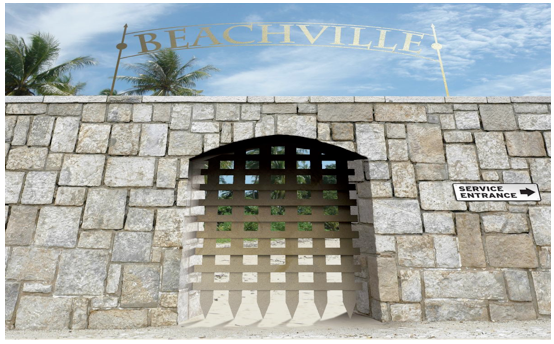
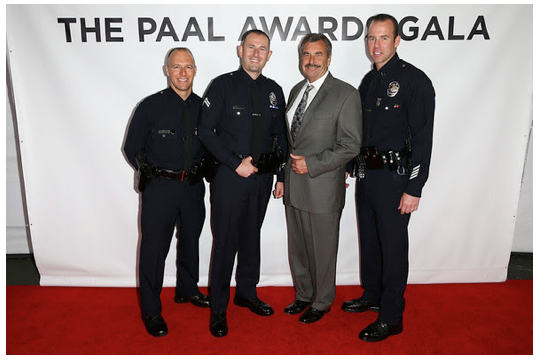
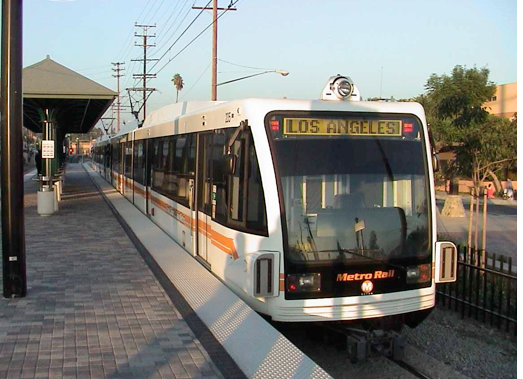




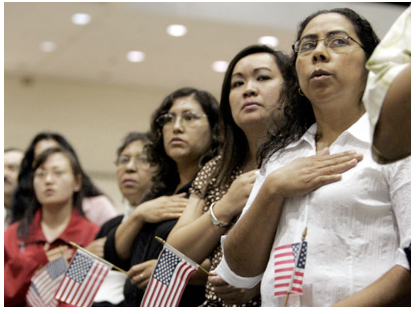

 If they truly believed in sustainable city planning – what I call the successful density of New York City versus the poorly performing density of Los Angeles -- they would insist that METRO engage in the same land use planning it once pursued through contracts with LA City Planning -- when they planned and built the original MetroRail subway in the 1980s. When done right, this planning should include heavily subsidized affordable housing projects at transit stations.
If they truly believed in sustainable city planning – what I call the successful density of New York City versus the poorly performing density of Los Angeles -- they would insist that METRO engage in the same land use planning it once pursued through contracts with LA City Planning -- when they planned and built the original MetroRail subway in the 1980s. When done right, this planning should include heavily subsidized affordable housing projects at transit stations. 













